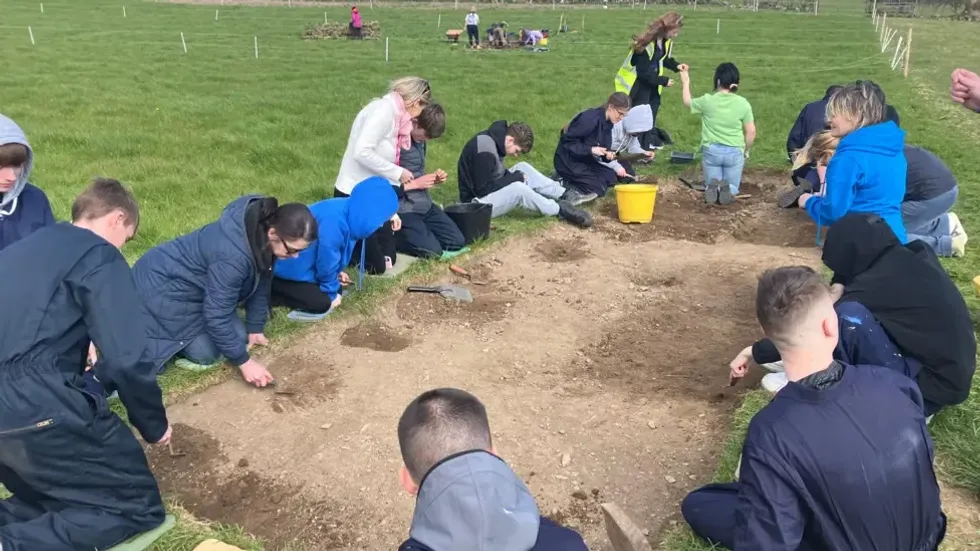The monastery was originally built in 1127 and operated for half a century before its destruction
Don't Miss
Most Read
Trending on GB News
Archaeologists believe they have uncovered the site of a 12th Century monastery near Downpatrick, County Down.
The Cistercian monastery, known as Erenagh, was destroyed in 1177 by Anglo-Norman knight John de Courcy.
A community excavation earlier this month revealed sections of wall, pottery, bone, slate and a 13th Century coin.
Nearly 850 years after the monastery was razed to the ground with its resident monks killed, the secrets of Erenagh may have been brought to the surface.

A community excavation earlier this month revealed sections of wall, pottery, bone, slate and a 13th Century coin
BBC
The two-week dig was organised by the Community Archaeology Programme Northern Ireland (CAPNI).
Among the discoveries were a section of wall, cut stones with a mason's mark, pottery, slate and a Henry III coin dating from around 1270.
The monastery was originally built in 1127 and operated for half a century before its destruction.
John de Courcy later built the cathedral at Inch Abbey as "an act of penance" and established it as a Cistercian monastery.
The ruins of Inch still stand on the other side of Downpatrick and were recently used as a filming location for Game of Thrones.
The excavation offered local school groups and aspiring archaeologists of all ages the chance to work on a real dig.
LATEST DEVELOPMENTS:Last year, a geophysical survey found the Erenagh field, located just a few hundred yards from Ballynoe Stone Circle, was filled with anomalies.
Three trenches were selected for excavation with volunteers digging, scraping and brushing deep into the earth.
Brian Sloan from Queen's University Belfast, who helped guide the team, highlighted Erenagh's importance as one of the first Cistercian monasteries in Ireland.
"They took a European model, so if you think of the old Irish monasteries like a Nendrum, you'd have a round tower with your church in the centre," he said.
"But with this you'd have a cloister. That's a series of buildings around the church that feed into the monastery."
Among those participating was a group from South Eastern Regional College's Skills for Life and Work course.
Student Billie, who has been interested in archaeology since childhood, said: "This is my second dig and I'm loving it."
Another student, Eoin, commented: "We've found bits of slate which were the roof tiles so we're hoping to find more later on."
Volunteers Valerie Shearer and Janice McHenry were competing to find the best artefact.
"I'd love to find a piece of pottery, but she beat me to it," said Janice. "It is very therapeutic because you aren't thinking of anything other than finding something."
Organisers will now study the findings from the excavation.
They are confident that radiocarbon analysis of the artefacts will confirm this was indeed the location of Erenagh's long-lost monastery.









